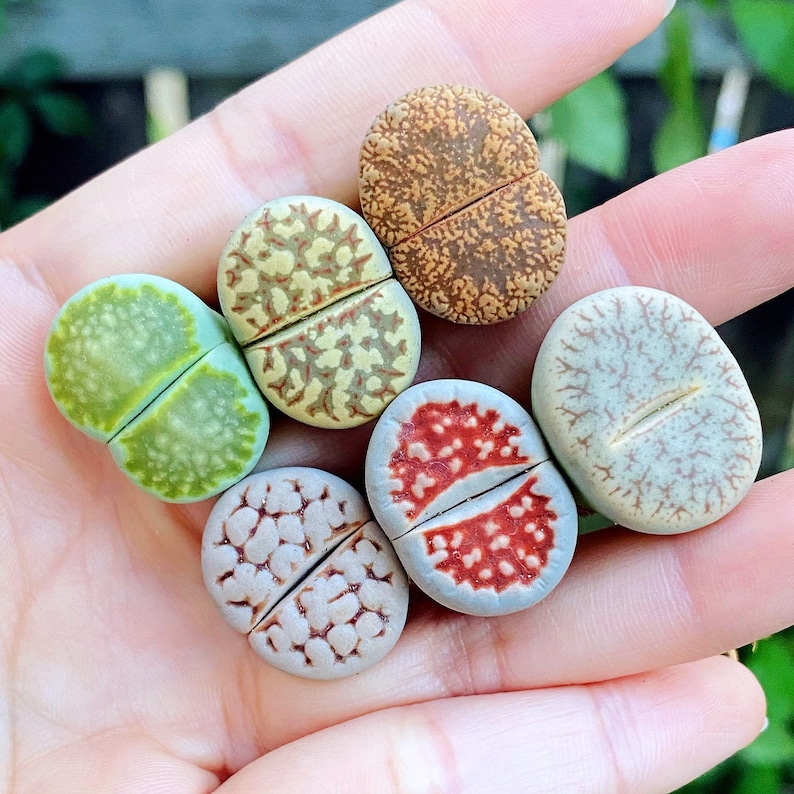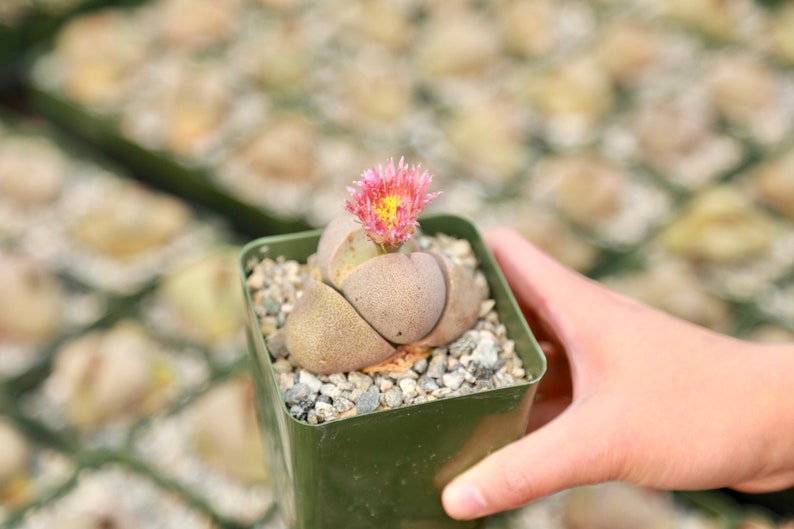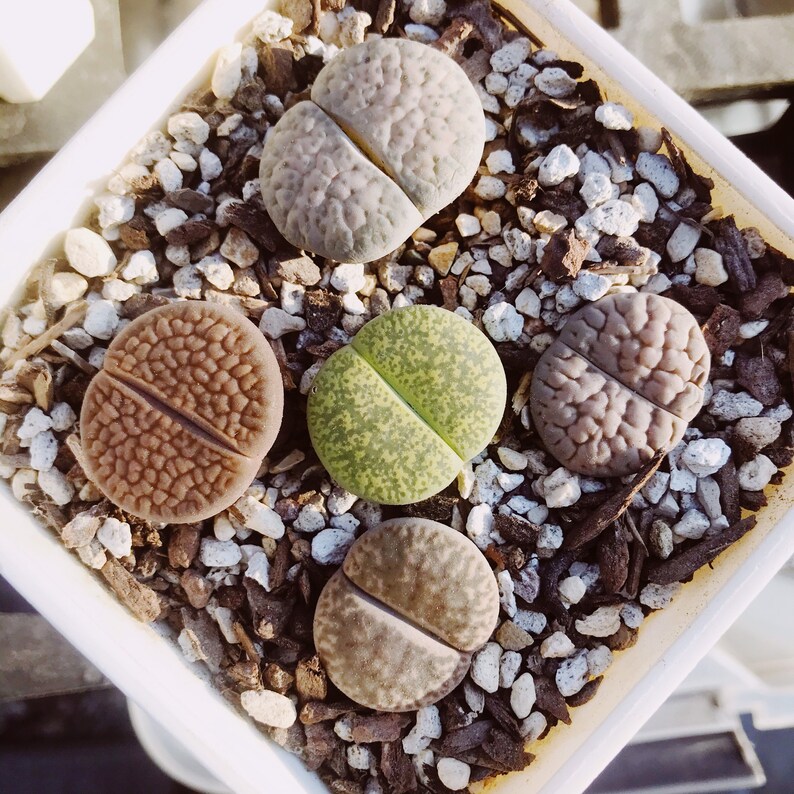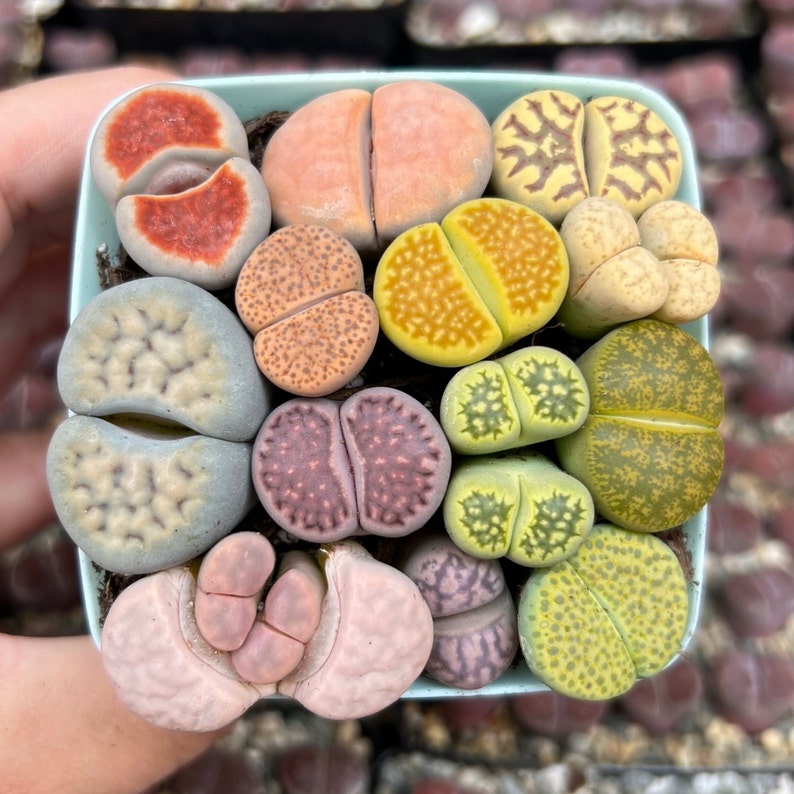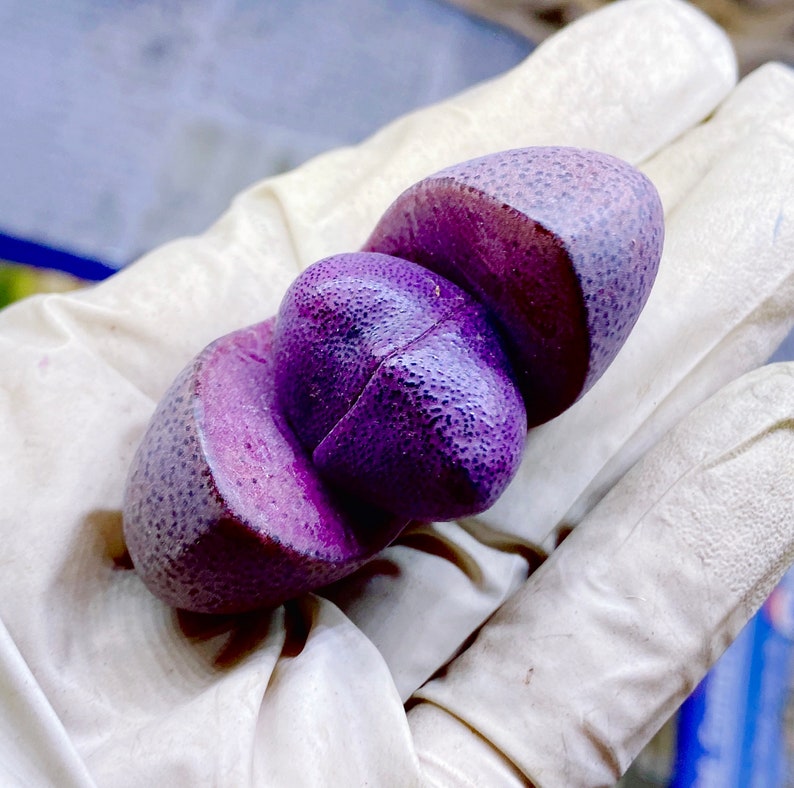If you’re a succulent enthusiast, you may have come across two types of plants that look very similar: Split Rock and Lithops. While these two plants belong to the same family, they are distinct species with unique characteristics. In this blog post, we’ll discuss the key differences between Split Rock and Lithops to help you tell them apart. This site contains product affiliate links. I may receive a commission if you make a purchase after clicking on one of these links.
Overview of Split Rock and Lithops
Family and Habitat
Split Rock and Lithops are both members of the family Aizoaceae, commonly known as the ice plant family. These plants are native to southern Africa and are known for their ability to store water in their leaves and survive in arid conditions.
Scientific Names
‘Split Rock’, scientifically known as Pleiospilos nelii, and Lithops, scientifically known as Lithops spp., are both commonly grown as houseplants and in succulent gardens.
Appearance
Shape and Size
Split Rock and Lithops have a similar appearance, which can make it difficult to tell them apart. Both plants are small, low-growing, and have a rounded or oblong shape. They both have two thick, fleshy leaves that are fused together at the base, creating a slit or “split” in the middle. However, Split Rock has a more pronounced split than Lithops. Additionally, Split Rock leaves are more spherical while Lithops leaves are more cylindrical.
Color and Texture
The key difference between Split Rock and Lithops is in their coloration and markings. Split Rock has a green or grayish-green body with a rough, pebbly texture and a reddish-brown or rust-colored slit. Lithops, on the other hand, come in a wide range of colors and patterns, which can include shades of green, brown, gray, pink, and purple. They also have distinctive markings that resemble patterns found in nature, such as stripes, spots, and even camouflage.
Flowering
Season and Appearance
Both Split Rock and Lithops produce small, daisy-like flowers in the fall or winter. The flowers of Split Rock are usually yellow or orange and appear on a short stalk that rises above the plant. The flowers of Lithops are usually white or yellow and appear directly on the plant’s body, often blending in with the plant’s markings.
Care Requirements
Light and Soil
Split Rock and Lithops have similar care requirements, but there are some differences to note. Both plants require bright, indirect sunlight and well-draining soil. They are drought-tolerant and should be watered sparingly, only when the soil is completely dry.
Temperature and Humidity
However, Split Rock prefers a slightly cooler and more humid environment than Lithops, which can tolerate higher temperatures and drier conditions.
While Split Rock and Lithops may look similar at first glance, there are key differences in their appearance, flowering habit, and care requirements. By paying attention to the shape, color, and texture of the leaves, and the season and appearance of the flowers, you can easily tell them apart. With proper care and attention, both Split Rock and Lithops can thrive as houseplants and add a unique touch to your succulent collection.


